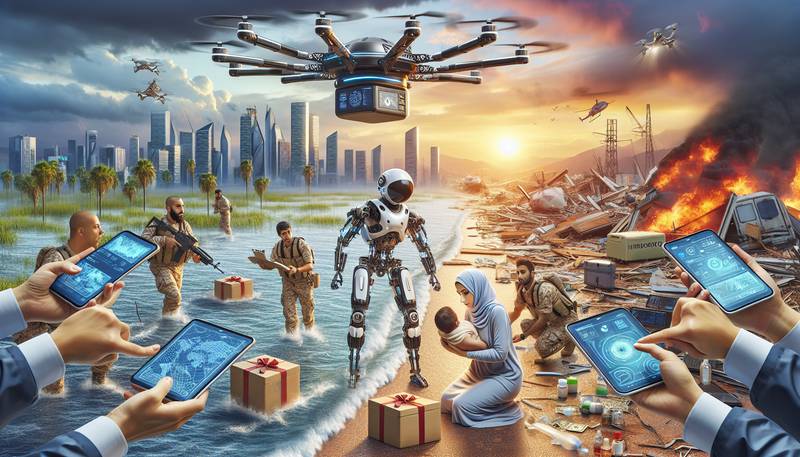Tech in Disaster Relief: Innovation in Humanitarian Aid

The Role of Technology in Disaster Relief
When disaster strikes, technology can be a lifesaver. From early-warning systems to efficient communication channels, there is no denying that tech plays a crucial role in disaster relief efforts. In recent years, we have seen an explosion in innovative tech solutions that are changing the face of humanitarian aid. These advancements are making it possible for aid organizations to respond faster, more efficiently, and with greater precision to the needs of those affected by disasters.
Early-Warning Systems and Data Analytics
One of the most significant ways technology has transformed disaster relief is through the development of early-warning systems and data analytics. These tools allow aid organizations to predict disasters before they happen and to prepare accordingly. For example, the use of satellite imagery and drones can help to identify areas that are at high risk of flooding, allowing for preemptive evacuation and the prepositioning of emergency supplies.
Data analytics can also be used to track the spread of diseases following a disaster, enabling health organizations to respond more effectively to outbreaks. By analyzing data from social media and other sources, aid organizations can gain a better understanding of the needs and priorities of affected communities, allowing them to tailor their response to the specific needs of the people they are trying to help.
Communication and Coordination
Effective communication and coordination are essential in the aftermath of a disaster. Tech solutions such as mobile apps and social media platforms can help to connect aid organizations with affected communities, allowing them to share information and coordinate their efforts. For example, the Red Cross has developed a mobile app that allows users to receive alerts about disasters in their area and to request help if they need it.
In addition to connecting aid organizations with affected communities, tech can also help to improve coordination between different organizations. For example, the use of a shared digital platform can help to ensure that aid is distributed efficiently and that there is no duplication of effort.
Innovative Solutions for Shelter and Logistics
Another area where tech is making a big impact is in the provision of shelter and logistics. Innovative solutions such as inflatable shelters and modular housing can be quickly deployed in the aftermath of a disaster, providing temporary accommodation for those who have lost their homes.
Logistics is another area where tech is making a difference. The use of drones and other unmanned aerial vehicles can help to deliver emergency supplies to remote or inaccessible areas, while the use of blockchain technology can help to ensure that aid is distributed transparently and securely.
The Future of Tech in Disaster Relief
As technology continues to evolve, we can expect to see even more innovative solutions to the challenges of disaster relief. For example, the use of artificial intelligence and machine learning could help to improve the accuracy of early-warning systems, while the development of new materials and construction techniques could lead to even more efficient and sustainable shelter solutions.
Ultimately, the goal of tech in disaster relief is to save lives and alleviate suffering. By harnessing the power of innovation, aid organizations can respond more effectively to the needs of those affected by disasters and help to build a more resilient future for all.
Conclusion
Disaster relief is a complex and challenging field, but technology is helping to make it more efficient and effective. From early-warning systems to innovative shelter solutions, tech is changing the way we respond to disasters and improving the lives of those affected by them. As we continue to develop new technologies, we can look forward to a future where aid organizations are better equipped than ever to help those in need.
So next time disaster strikes, remember that technology is on our side, working tirelessly to help us respond faster, smarter, and more efficiently. It's not just about the gadgets and the gizmos, it's about saving lives and making a positive impact in the world. And that's something worth celebrating.


